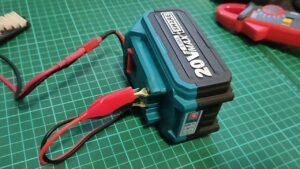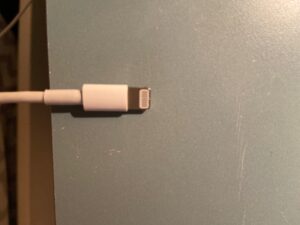What is Qi wireless charger? If you’ve ever found yourself tangled in a web of charging cables, desperately searching for an available outlet, then look no further! Qi wireless charger is the answer to your charging woes. With this innovative technology, you can say goodbye to the hassle of cords and plugs. Simply place your device on a charging pad, and voila! The power will flow seamlessly, without any physical connection. In this blog article, we will delve into the world of Qi wireless chargers, exploring how they work and the benefits they offer. So, let’s jump right in!
What is Qi Wireless Charger?
Qi wireless charging is a technology that allows you to charge your devices without the need for traditional charging cables. It uses electromagnetic fields to transfer power from a charging pad or mat to your device. The term “Qi” (pronounced “chee”) comes from the Chinese word for “energy flow,” which is an appropriate name for a technology that relies on the transfer of power through invisible waves.
How Does Qi Wireless Charging Work?
Wireless charging works through a process called inductive charging. The charging pad or mat contains a coil that generates an alternating current. When you place your compatible device on the pad, it also has a coil that receives the alternating current and converts it back into direct current to charge the battery.
Here’s a step-by-step breakdown of how Qi wireless charging works:
- The charging pad or mat generates an alternating current in its coil.
- You place your Qi-enabled device on the charging pad.
- Your device’s coil receives the electromagnetic field created by the charging pad.
- The coil in your device converts the alternating current back into direct current to charge the battery.
Qi Compatibility
For your device to be compatible with Qi wireless charging, it needs to have a built-in Qi receiver or be equipped with a Qi-compatible accessory, such as a wireless charging case or receiver. Many modern smartphones, tablets, smartwatches, and even some laptops have built-in Qi support. It’s worth checking the specifications of your device to confirm if it is Qi-enabled.
Benefits of Qi Wireless Charging
Using a Qi wireless charger offers several advantages over traditional wired charging methods:
- Convenience: With a wireless charger, you can simply place your device on the charging pad without the hassle of plugging and unplugging cables.
- Reduced wear and tear: Eliminating the need for constant cable connections can help prevent wear and tear on the charging port of your device.
- Multiple device charging: Many Qi wireless chargers allow you to charge multiple devices simultaneously, such as a smartphone and smartwatch, making it a convenient solution for households with multiple devices.
- Freedom of movement: Qi wireless charging allows you to charge your device without being restricted by the length of a charging cable. You can easily pick up your device and use it while it charges.
Qi Wireless Charging Standards
The Wireless Power Consortium (WPC) is responsible for developing and maintaining the Qi wireless charging standard. Over the years, the WPC has released several versions of the standard, each with improvements and new features.
Qi 1.0
The initial version of the Qi standard was released in 2010. It allowed for wireless charging at a maximum power output of 5 watts. Qi 1.0 introduced the basic functionality of wireless charging and paved the way for further advancements.
Qi 1.1
Qi 1.1, released in 2012, introduced an extension to the standard called “Foreign Object Detection” (FOD). This feature ensured that only Qi-compatible devices would activate the charging process, preventing incompatible objects from accidentally activating the charging pad.
Qi 1.2
In 2014, Qi 1.2 brought significant improvements to the standard. These included:
- Increased charging power: Qi 1.2 allowed for charging at up to 15 watts, enabling faster charging times.
- Wider charging area: The standard expanded the active charging area, making it easier to position devices on the charging pad.
- EPP (Extended Power Profile): EPP introduced a standardized approach to enable faster charging for compatible devices while maintaining compatibility with lower power devices.
Qi 1.3
Released in 2015, Qi 1.3 introduced more refinements to the standard. These included:
- Improved efficiency: Qi 1.3 reduced the power loss during the charging process, making wireless charging more energy-efficient.
- Foreign Object Detection enhancements: The standard added new detection capabilities to prevent even more types of foreign objects from interfering with the charging process.
Qi 1.4
The latest version of the Qi standard, Qi 1.4, was released in 2019. It includes:
- Fast charging for larger devices: Qi 1.4 introduced Extended Power Range (EPR), allowing for even faster wireless charging on larger devices like laptops.
- Automatic device orientation detection: The standard includes a feature that detects the optimal charging position, regardless of device orientation on the charging pad.
- Improved interoperability: Qi 1.4 ensures better compatibility between devices from different manufacturers, making it easier to find Qi-compatible accessories.
Qi Wireless Charging in Everyday Life
Qi wireless charging has become increasingly popular and is now supported by a wide range of devices. Here are some everyday applications of Qi wireless charging:
Smartphones and Tablets
Many flagship smartphones, such as iPhone models from the iPhone 8 and later, Samsung Galaxy devices, and Google Pixel phones, support wireless charging out-of-the-box or with compatible cases. Qi wireless charging pads can be found in homes, offices, and public places like coffee shops and airports, providing a convenient way to keep your devices charged.
Wireless Earbuds and Smartwatches
Wireless earbuds, like Apple AirPods and various models from other brands, often come with wireless charging cases that can be charged on Qi-enabled pads. Similarly, many smartwatches, including Apple Watch models, support wireless charging, allowing you to charge them without the need for cables.
Wireless Charging Stations in Vehicles
Some modern vehicles feature built-in wireless charging pads, allowing you to charge your Qi-enabled smartphone while driving. This eliminates the need for messy cables and provides a convenient way to keep your device powered up during your commute.
Furniture with Built-in Wireless Charging
Innovative furniture designs now incorporate wireless charging pads into the surface of desks, nightstands, and even lamps. These charging surfaces blend seamlessly into the design of your furniture and provide a convenient way to charge your devices without dealing with cables cluttering your space.
Qi wireless charging offers a convenient and cable-free way to charge your devices. The technology continues to evolve, with faster charging speeds, wider support, and improved interoperability. Whether it’s in your home, office, or on-the-go, Qi wireless charging pads and accessories provide a seamless charging experience for a variety of devices. Embracing this technology can simplify your charging routine and help keep your devices powered up whenever you need them.
What is Qi Wireless Charging & Why You Definitely Want It
Frequently Asked Questions
What is a Qi wireless charger?
A Qi wireless charger is a device that uses the Qi wireless charging standard to transmit power to compatible devices without the need for cables or physical connections. It allows you to charge your smartphone or other Qi-enabled devices by simply placing them on the charging pad or stand.
How does Qi wireless charging work?
Qi wireless charging operates on the principle of electromagnetic induction. The charger generates an electromagnetic field which is picked up by the receiver coil in the Qi-enabled device. This induction process converts the electromagnetic energy into electrical energy, which charges the device’s battery.
What devices are compatible with Qi wireless charging?
A wide range of devices are compatible with Qi wireless charging, including smartphones like the latest iPhone models, Samsung Galaxy phones, and Google Pixel phones, as well as smartwatches, tablets, and even some headphones.
Do I need a special case or accessory for my device to use Qi wireless charging?
If your device is not already Qi-enabled, you will need a wireless charging receiver or a specific case that supports wireless charging. These accessories contain the necessary induction coil to pick up the electromagnetic energy from the charging pad and transfer it to your device’s battery.
Can I charge multiple devices simultaneously with a Qi wireless charger?
Yes, many Qi wireless chargers have multiple charging coils or multiple charging spots, allowing you to charge multiple compatible devices at the same time. However, the charging speed may be slightly reduced when multiple devices are connected.
Is Qi wireless charging slower than traditional wired charging?
Qi wireless charging can be slightly slower than traditional wired charging methods. However, the difference in speed is minimal and may vary depending on the specific charger and device being charged. Keep in mind that the convenience and cable-free experience of wireless charging often outweigh the slight difference in charging time.
Final Thoughts
Qi wireless charger is a revolutionary technology that allows for easy and convenient charging of electronic devices. With Qi wireless charger, you can simply place your device on the charging pad without the need for messy cables or connectors. It utilizes electromagnetic fields to transfer power from the charger to the device, ensuring a safe and efficient charging experience. Qi wireless charger is compatible with a wide range of devices, including smartphones, smartwatches, and earbuds. It offers a convenient and clutter-free solution for keeping your devices powered up. If you’re looking for a hassle-free charging experience, look no further than Qi wireless charger.



